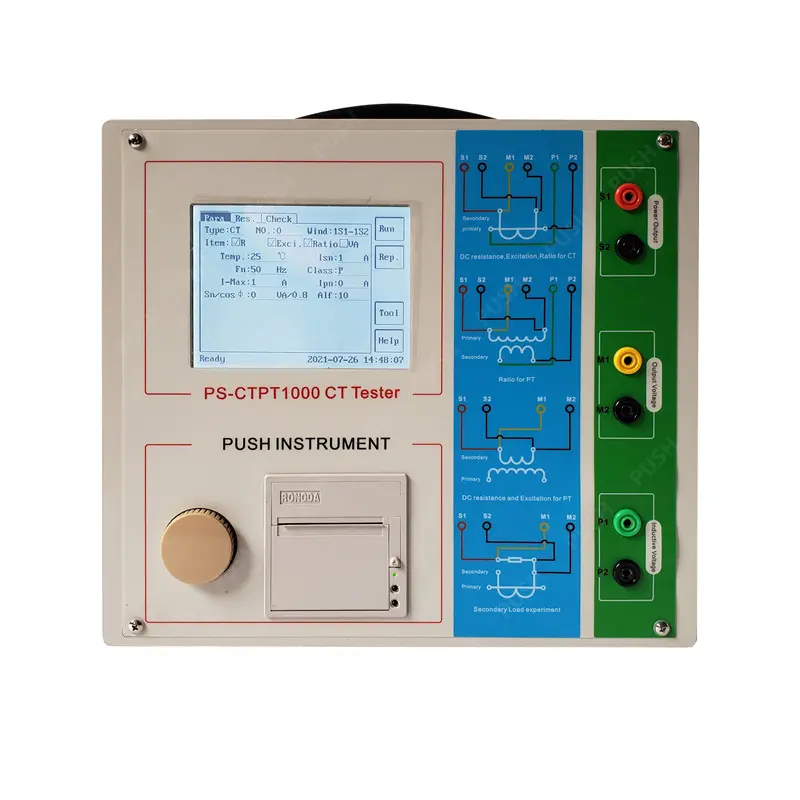How does the sensitivity of an current transformer tester affect its performance?
The sensitivity of a current transformer (CT) tester directly impacts its performance in several critical ways:
- Detection Accuracy: The sensitivity of the CT tester determines its ability to accurately detect and measure small currents passing through the transformer. A highly sensitive tester can detect even minor changes in current flow, ensuring precise measurement and reliable performance.
- Measurement Range: Sensitivity influences the measurement range of the CT tester. A more sensitive tester can accurately measure a broader range of currents, from low to high values, without sacrificing accuracy or resolution. This versatility allows the tester to be used in a wider range of applications and scenarios.
- Resolution: Higher sensitivity results in finer resolution of current measurements. This means that the CT tester can distinguish smaller increments of current, providing more detailed and precise results. Improved resolution enhances the tester’s ability to detect subtle changes in current flow, making it more effective for diagnosing transformer issues and monitoring performance.
- Dynamic Response: Sensitivity affects the dynamic response of the CT tester, which refers to its ability to respond quickly to changes in current flow. current transformer tester A highly sensitive tester can rapidly detect fluctuations in current, providing real-time monitoring and analysis of transformer behavior. This is particularly important for detecting transient events or abnormalities that may indicate potential issues with the transformer.
- Signal-to-Noise Ratio: Sensitivity influences the signal-to-noise ratio (SNR) of the CT tester, which measures the strength of the signal relative to background noise. A more sensitive tester can detect weaker signals in the presence of noise, ensuring accurate and reliable measurements even in challenging environments with high levels of interference.
- Accuracy and Precision: The sensitivity of the CT tester directly impacts its accuracy and precision in measuring current. A highly sensitive tester can achieve greater accuracy and precision, minimizing measurement errors and ensuring reliable performance under various operating conditions.
- Threshold Detection: Sensitivity determines the minimum detectable current level that the CT tester can reliably measure. A more sensitive tester can detect lower current levels, allowing it to identify even minor abnormalities or faults in the transformer’s operation.
In summary, the sensitivity of a current transformer tester is a critical factor that directly influences its performance in terms of detection accuracy, measurement range, resolution, dynamic response, signal-to-noise ratio, accuracy, precision, and threshold detection. By selecting a CT tester with the appropriate sensitivity for the application, users can ensure reliable and accurate testing of current transformers in various industrial and electrical systems.
